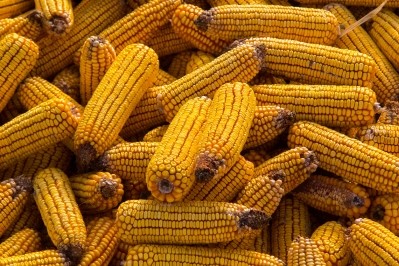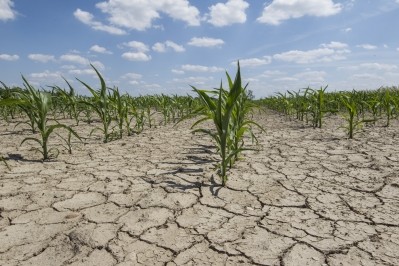Researchers hit on way to make canola and soybeans drought resistant

An international team of researchers has been trying to understand how to make feed crops more drought resistant, said corresponding researcher Peter McCourt, professor in the department of cell and systems biology and Canada research chair in plant molecular biology at the University of Toronto.
The group tracked the interactions between hormones in a plant that were known to be linked to stress reactions – like drought.
They found when specific steroid hormones, brassinosteroid (BR) are reduced, the plant becomes more sensitive to the hormone abscisic acid (ABA) and has better responsiveness to protecting itself from drought stress, he told FeedNavigator.
Improving drought tolerance in feed crops has been a longtime goal, said McCourt. Initially some work in that area sought plant varieties that were more sensitive to the hormone ABA.
“When plants get stressed by heat or cold or drought they produce ABA and it protects them from the stress,” he said. It appeared to be related to the interruption of farnesylation, but it was unclear how the interaction worked.
“We were able to find the protein that was farnesylated – that protein was an enzyme involved with brassinosteroid (BR),” he said. The farnesylation process helps certain proteins move within the plant, but it was unclear what the process accomplished, he added.
Improving a plant’s reaction to drought conditions had more to do with regulating the brassinosteroid than with sensitivity to ABA, he said.
“Organisms when they’re under an environmental stress they needed to hunker down,” said McCourt. “I believe what’s going on here is when you inhibit farnesylation [and reduce BR] in a plant it slows down the plant, the metabolism is slower and growth [slows].”
Drought tolerance and climate change
As the influence of climate change on feed crops becomes more pronounced droughts are likely to get worse in some parts of the world, said McCourt. “Drought is the major detriment to yield in agriculture,” he added.
Crops like canola and soybeans can be sensitive to low-water conditions and important economically. As of 2013, canola added $19.3bn to the Canadian economy and is considered one of the country’s most valuable crops.
Manipulation of plants through breeding techniques has been able to get plants to present many different traits, said McCourt. However, that can be a slow process.
Being able to understand how plant components interact and how to tailor or manipulate the plant to address problems is important, he said.
“What really climate change is to me is severe shifts in climate from year-to-year or month-to-month, so we’re going to need ag tech that allows us to develop crops more quickly for the unknown – drought and flooding are going to change,” he said.
Examples and applications
The study examined several genotypes of Arabidopsis that were raised under specific conditions, said McCourt. Water was withheld for period of time to simulate a drought stress.
However, plants where the farnesylation had been interrupted or diminished were able to recover from the period of stress, he said.
The interactions tracked found that reducing the amount of BR produced in the plant it can help it respond better to the ABA generated during a stress event, like drought, and adapt to those conditions, said McCourt.
“Understanding the mechanism has opened up new way to look at things from the ag biotech industry,” said McCourt.
On the plant side, modifications could be made to regulate farnesylation when a stress event occurred, he said. “You wouldn’t inhibit farnesylation until drought stress – and when you start to drought stress it would hopefully protect the plant,” he added.
In addition to manipulating the plant, there also could be treatments applied to the plants to reduce BR. “From an applied perspective it gives you a new target – if you inhibit BR using a chemical or drug then you might be able to get the same result,” he added.
Although the initial work was not done on canola, the plant used is genetically similar to the feed crop, he said. The findings also are anticipated to apply to other crops including soybeans.
Source: Nature Plants
Title: Farnesylation mediates brassinosteroid biosynthesis to regulate abscisic acid responses
DOI: 10.1038/NPLANTS.2016.114
Authors: J Northey, S Liang, M Jamshed, S Deb, E Foo, J Reid, P McCourt and M Samuel










